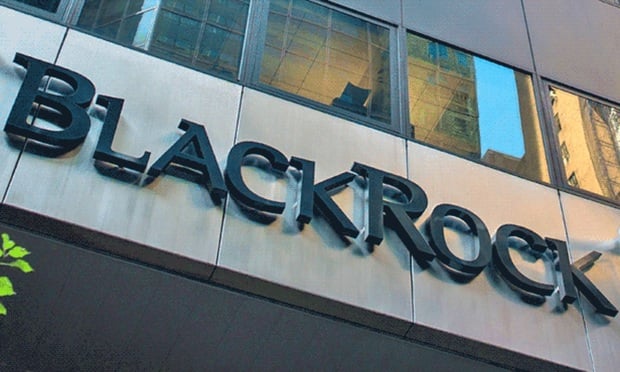 (Photo: Shutterstock)
(Photo: Shutterstock)
Nearly all defined contribution plans offer a target date fund, a trend that is continuing to shrink the core menu, according to new research from research-driven investment advisory firm NEPC.
The data is part of NEPC's 2022 DC Plan Trends & Fees Survey, which examines current plan investment trends, features and innovations across major sectors and how these plans have evolved over the years. The 17th annual survey included 207 DC plans across 119 clients with a total of 2.2 million participants and $283 billion in aggregate assets. Twelve recordkeepers also responded to the survey. The average plan represented survey participants who had $1.9 billion in assets and 13,452 participants.
Recommended For You
The survey found that 46% of plan assets are in TDFs, up from 28% in 2011, while 54% of assets were in core menu options, compared with 72% in 2011. The average participant balance held in TDFs was $113,254; 95% of plans use TDFs as a Qualified Default Investment Alternative (QDIA).
While TDFs remain a popular option, plan sponsors are increasingly seeking guidance from investment consultants to help them better navigate rising scrutiny of TDFs, NEPC said.
"Off-the-shelf and custom TDFs can have wide-ranging risk allocations, expenses, and best practices for management and reporting – something recent regulation and court cases are looking to address," added Bill Ryan, partner and head of Defined Contribution (DC) Solutions at NEPC. "As we're likely to see continued focus on America's retirement crisis in the years ahead, plan sponsors should be having hard conversations today about their fiduciary decision-making and monitoring process for TDFs on their menu."
Fiduciaries have come under scrutiny when it comes to TDFs, after the Supreme Court's 2022 decision, which ruled that fiduciaries have an ongoing duty to monitor the prudence of investment options, including TDFs, in a 401(k) plan and not "select it and forget it," as overwhelming marketed to participants.
Related: Holding pattern: Employees don't expect to make any changes to their 401(k)s in 2023
This year's data showcases that retirement income solutions have become more prevalent, with 84% of respondents currently offering their participants a retirement income solution – most often in the form of a TDF that includes the flexibility to take installment withdrawals as a source of income in retirement. However, the survey also points to two major challenges for plan sponsors: there is still no consistency or industry consensus on how to create meaningful retirement income solutions in pooled employer plans, and retirement income solution selection remains a pain point for many DC clients.
DC plan participants on average held 2.5 funds in their portfolio, and more than two-thirds of participants have at least one TDF. The average balance among all participants was $162,593, with those over 60 having a slightly higher average balance of $260,431, according to the survey.
The average tenure for participants in their plan was 11 years overall and 20 years for those over age 60. On average, 61% of year-end contributions were held in the QDIA.
Most plans offered between 11 and 14 core options, with stocks accounting for between 5 and 10 of those options; 21% of funds offered more than 15 core options and 20% offered six to 10 core options.
Managed accounts were offered by 38% of plans, but only 5% of participants use managed accounts and only 4% of assets are invested in managed accounts, according to the survey. The survey said managed accounts have remained stagnant for the past four years. Meanwhile, fees are becoming more negotiable and some providers are offering asset-based fees with a hard dollar cap per participant, said NEPC.
High level of ESG integration
The study also found a high level of participation in ESG initiatives via ESG integration, or ESG factors being built in as part of the investment process. More than 79% of DC plans were using integration methods, while only 6% of DC plans were screening in/out certain securities based on non-financial factors.
"As participants continue to demand retirement income solutions, plan sponsors are seeking trusted stewards to help them simplify what's become a pretty complex evaluation and selection process," said Alison Lonstein, principal and senior consultant on NEPC's DC team. "This trend mirrors what we've seen in other segments of the retirement space – especially the increasingly complex ESG and legal environments. We've seen a significant uptick in clients asking for fiduciary training on the ESG landscape and requests for more insight and intel around legal news."
Other key trends highlighted in NEPC's new survey include increased adoption of passive tier options, with 83% of plans currently offering a passive tier (three or more index funds), an increase from just 66% in 2020. In addition, demand for outsourced CIO services in the DC market is on the rise. As plan sponsors' workforces and governance structures change, they are increasingly looking for OCIO solutions to streamline their plans. Throughout 2021, NEPC saw a 94% increase in OCIO assets (largely driven by a 17% increase in OCIO clients). Overall, 10% of NEPC's DC clients are using the firm's OCIO solution.
Kristen Beckman is a freelance writer based in Colorado. She previously was a writer and editor for ALM's Retirement Advisor magazine and LifeHealthPro online channel.
© Touchpoint Markets, All Rights Reserved. Request academic re-use from www.copyright.com. All other uses, submit a request to [email protected]. For more inforrmation visit Asset & Logo Licensing.






